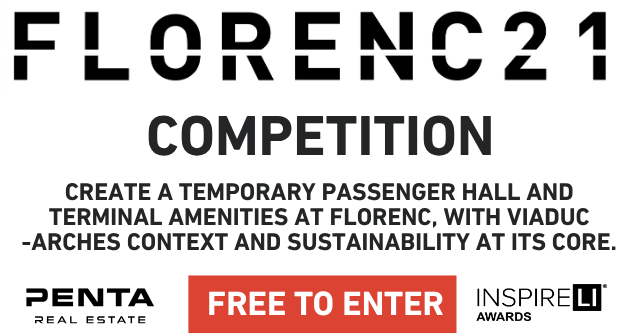Kultúrne Centrum Jarovce
Idea projektu
Hlavnou myšlienkou návrhu je vymedziť rozmanité verejné priestory prostredníctvom hmotovej kompozície a aktívne ich prepojiť s okolitou štruktúrou. Budovy nie sú len nositeľmi funkcie, ale nástrojmi na aktivizáciu verejného priestoru a podporu komunitného života. Námestie pri hlavnej ulici je živé, reprezentatívne a otvorené širokej verejnosti. Druhé nádvorie má naopak komunitný, poloverejný charakter - ponúka priestor na oddych, sociálnu interakciu a iniciatívy vedené obyvateľmi. Flexibilita a otvorenosť sú kľúčovými prvkami návrhu: prízemia sú navrhnuté tak, aby sa v priebehu času mohli využívať na rôzne účely, čím sa zabezpečí dlhodobá udržateľnosť a prispôsobivosť budov. Cieľom návrhu nie je definitívna podoba, ale skôr štruktúra, ktorá sa môže časom vyvíjať podľa potrieb svojho prostredia.
Popis projektu
Chorvátske kultúrne centrum v Jarovciach sa nachádza na rozhraní rozvíjajúcej sa časti obce a jej prírodného prostredia. Návrh sa zapája do existujúceho urbanistického a spoločenského kontextu a nezameriava sa len na pridelenú funkciu kultúrneho centra. Architektúra tu nevzniká ako finálny produkt, ale ako reakcia na prostredie - ako priestorový rámec, ktorý definuje nové verejné priestory. Projekt vytvára dva kontrastné mestské priestory - aktívne námestie pozdĺž hlavnej cesty a pokojnejšie, intímnejšie nádvorie orientované do parku. Tieto dva priestory sú prepojené pešou "vnútornou ulicou", ktorá ponúka sled zážitkov a vizuálneho napätia, pripomínajúc výhľady, ktoré sa nachádzajú v starých európskych mestách. Projekt nevytvára len architektúru, ale aj priestor pre život komunity, ktorý môže prirodzene rásť a vyvíjať sa
Technické informácie
Technické riešenie je založené na jednoduchej, logickej a udržateľnej koncepcii. Budovy sú navrhnuté ako flexibilné objemy s centrálnymi priestormi pre verejné využitie a servisnými zónami umiestnenými po obvode, ktoré sú orientované na menej atraktívne hranice pozemku. Konštrukčný systém tvorí železobetónový skelet, ktorý umožňuje jednoduchú rekonfiguráciu a dlhodobú životnosť. Architektonický plášť je koncipovaný ako dočasná a vymeniteľná vrstva - jeho jednoduchá, odsadená forma je navrhnutá tak, aby sa dala časom vymeniť, rozšíriť alebo odstrániť. Nové doplnky fasády, ako napríklad prístrešky alebo architektonické prvky, sú navrhnuté v jasnom vizuálnom a materiálovom kontraste s neutrálnym základom. Celá kompozícia je koncipovaná ako otvorený systém - nie ako uzavretá forma, ale ako infraštruktúra pre rast, podobne ako semeno, ktoré sa prispôsobuje prostrediu, v ktorom rastie.
Projekt odovzdaný
23. 05. 2025Štítok
Rady študentom


